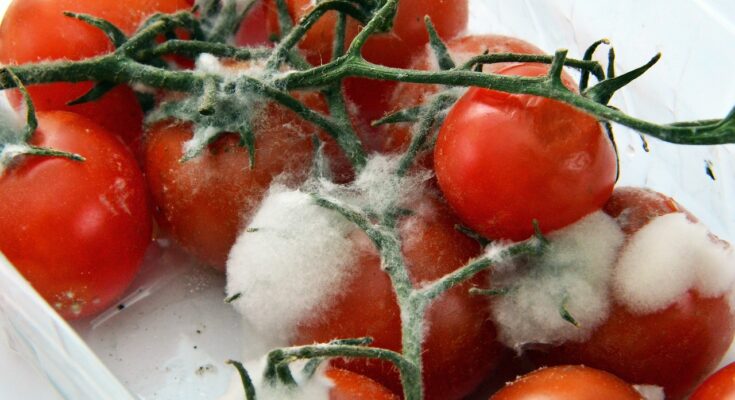Are you in the food processing industry and find yourself constantly dealing with common issues that disrupt your production? Don’t worry, we’ve got you covered!
In this article, we will guide you through troubleshooting the most common problems that arise in food processing. Whether it’s equipment malfunctions, quality control issues, contamination problems, production delays, or packaging and labeling errors, we’ll show you how to tackle them head-on.
By following our step-by-step instructions and utilizing your problem-solving skills, you’ll be able to minimize downtime, maximize efficiency, and ensure the highest quality standards for your products.
So, grab your tools and get ready to become a troubleshooting expert in food processing. Let’s dive right in and solve those pesky issues that have been holding you back!
Identifying Equipment Malfunctions
You need to pay attention to the signs of equipment malfunctions, as they can lead to costly delays and potential food safety hazards. When troubleshooting common issues in food processing, it’s important to be proactive in identifying equipment malfunctions.
Keep an eye out for unusual noises, vibrations, or odors coming from the machinery. These can indicate that something is not functioning properly. Additionally, be observant of any leaks, loose parts, or irregularities in the equipment’s performance. It’s crucial to address these issues promptly to prevent further damage or breakdowns.
Regular maintenance and inspections are essential to catch any potential malfunctions early on. By staying vigilant and addressing equipment malfunctions promptly, you can ensure the smooth operation of your food processing facility and maintain the highest standards of food safety.
Addressing Quality Control Issues
To effectively handle quality control concerns in the food processing industry, it’s crucial to promptly address any potential glitches that may arise.
The first step is to establish a robust quality control system that includes regular inspections and testing at various stages of the production process. This ensures that any issues can be identified and rectified before they impact the final product.
In addition, it’s important to train employees on quality control procedures and encourage them to report any anomalies or deviations from the standard operating procedures.
When an issue is identified, it’s essential to investigate the root cause and take swift corrective actions to prevent recurrence. This may involve adjusting processes, replacing faulty equipment, or implementing additional quality checks.
By addressing quality control issues proactively, you can maintain high standards and ensure the safety and satisfaction of your customers.
Resolving Contamination Problems
Addressing contamination problems can be a stressful and alarming task, as it puts the safety and well-being of consumers at risk. When faced with such issues, it’s crucial to act swiftly and efficiently to resolve the problem.
First, identify the source of contamination by conducting thorough investigations and inspections. This may involve testing samples, reviewing production processes, and assessing the hygiene practices followed.
Once the source is identified, take immediate action to eliminate the contaminant and prevent further spread. This may include halting production, cleaning and sanitizing equipment, and implementing stricter quality control measures.
Additionally, it’s essential to communicate openly and transparently with relevant authorities, customers, and stakeholders to ensure everyone is informed and appropriate actions are taken.
By addressing contamination problems promptly and effectively, you can safeguard consumer trust and maintain the integrity of your food processing operations.
Dealing with Production Delays
When faced with production delays, it’s crucial to have contingency plans in place to minimize disruptions and ensure a smooth and efficient operation.
Start by identifying the root cause of the delay. Is it due to equipment malfunction, shortage of ingredients, or human error? Once you have pinpointed the issue, take immediate action to address it.
If it’s a problem with the machinery, have a qualified technician on standby to fix it as quickly as possible.
In case of ingredient shortage, establish relationships with multiple suppliers to avoid being reliant on just one. Additionally, cross-train your employees so that they can step in and fill any gaps in production.
Finally, regularly review and update your contingency plans to stay prepared for any unforeseen delays in the future.
Preventing Packaging and Labeling Errors
Implementing thorough quality control measures is essential in preventing packaging and labeling errors, ensuring that products are accurately and attractively presented to consumers.
To prevent packaging errors, make sure to carefully inspect all packaging materials for any defects or damage before use. Additionally, double-check that the correct labels are applied to each product and that all relevant information, such as ingredients and allergens, is accurately displayed.

Regularly train and educate employees on proper packaging and labeling procedures to minimize human errors. Utilize barcode scanners or automated systems to verify that the correct labels are being used for each product.
Conduct regular audits and inspections to identify any potential issues or deviations from standards. By proactively addressing packaging and labeling errors, you can maintain customer satisfaction and uphold the reputation of your food processing operations.
Conclusion
In conclusion, troubleshooting common issues in food processing requires you to be vigilant and proactive. By identifying equipment malfunctions and addressing quality control issues, you can ensure a smooth and efficient operation. Additionally, resolving contamination problems, dealing with production delays, and preventing packaging and labeling errors are crucial steps. Remember to stay focused and take immediate action when problems arise. With your dedication and problem-solving skills, you’ll be able to overcome any challenges that come your way and maintain a high standard of food processing.




